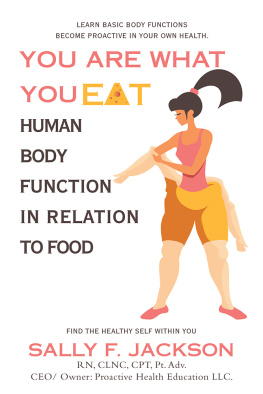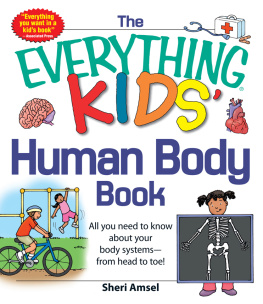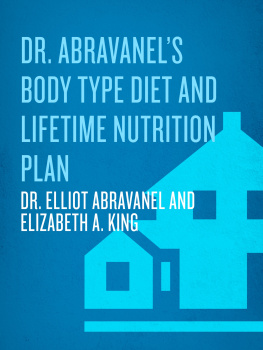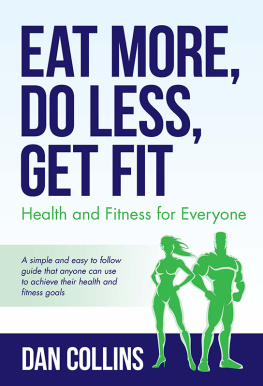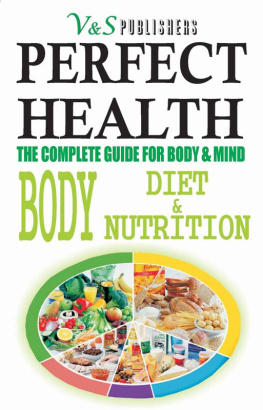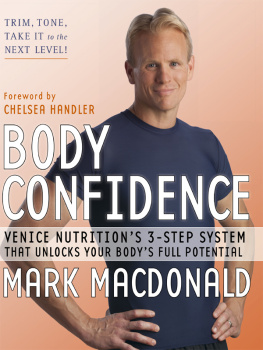YOU ARE WHAT
YOU EAT
HUMAN BODY FUNCTION
IN RELATION TO FOOD
SALLY F. JACKSON

Written by 
Sally F. Jackson RN, CLNC, CPT, Pt. Adv.
CEO/ Owner: Proactive Health Education LLC.
All rights reserved. No part of this book may be used or reproduced by any means, graphic, electronic, or mechanical, including photocopying, recording, taping or by any information storage retrieval system without the written permission of the author except in the case of brief quotations embodied in critical articles and reviews.
General medical information contained in this publication is not intended to replace your doctor, or as medical advice for individual health problems. Any and all liability for actions or omissions based on the contents of this book is expressly disclaimed.
WestBow Press
A Division of Thomas Nelson & Zondervan
1663 Liberty Drive
Bloomington, IN 47403
www.westbowpress.com
1 (866) 928-1240
Because of the dynamic nature of the Internet, any web addresses or links contained in this book may have changed since publication and may no longer be valid. The views expressed in this work are solely those of the author and do not necessarily reflect the views of the publisher, and the publisher hereby disclaims any responsibility for them.
ISBN: 978-1-9736-3387-7 (sc)
ISBN: 978-1-9736-3388-4 (hc)
ISBN: 978-1-9736-3386-0 (e)
Library of Congress Control Number: 2018908285
WestBow Press rev. date: 10/19/2018
Copyright 2018 Sally F. Jackson.
Illustrated by C. Juracich
Any people depicted in stock imagery provided by Getty Images are models, and such images are being used for illustrative purposes only.
Certain stock imagery Getty Images.
Sinc ere thanks to t he physicians and researchers who were the major inspiration for this book;
Dr. Robert Lusting; Pediatric obesity, UCSF,
Bonnie Bassler; Bio Research, Princeton Univer sity,
Dr Joseph Mercola; Renowned advocate for practical health solut ions,
Stephanie Seniff; Bio Physics and Research at MIT,
Fred A. Kummerow PHD; Biochemist, University of Illi nois.
Contents
Chapter 1
Biochemistry 101, basic cellular structure and function
Chapter 2
The concept of insulin control with the use of bondable verses non-bondable fuels
Chapter 3
How to set your personal goals for health improvement
Chapter 4
The principles of basic proper functioning digestion
Chapter 5
How we gain or lose weight while maintaining optimum cellular health
Chapter 6
What is the most important organ in the human body, and why
Chapter 7
How modern science and the food industry have affected our foods
Chapter 8
A look at the nervous system, and responses only controlled by food
Chapter 9
How long will it take to show improvement and how does it occur
Chapters 10 and 11
The importance of each, how the body uses them, cell wall structure
Chapter 12
Water, sleep and exercise and how they affect body function
Chapter 13
What is cholesterol, and how do we keep it healthy
Chapter 14
Why is it so important, what does it do
Chapter 15
The deficiency few consider, but may be a big piece of the puzzle
Chapter 16
Is it important, how does it change function and how to apply it?
Chapter 17
What makes bones and keeps our electrical system charged
Chapter 18
Are they important as supplements or food
Chapter 19
Toxic health 101
Chapter 20
The truth about Statin drugs
No matter what your age, we all grew up, learning the same way.
We all learned to eat three meals a day and drink plenty of liquids, simply through the influences of our parents. In school, we learned basic science and sex education, but unless you took a cooking class, you learned nothing about nutritionand neither did your parents. The government attempts nutritional education by using outdated and flawed science as its basis for teaching and never connects the simple function of the body with the effects of food.
In order to understand the whys and wherefores of the foods we eat, we must be able to connect those foods directly to the bodys functions. Otherwise, the statement that vitamin D is good for you has no mea ning.
Years ago, the food pyramid was devised in an attempt to guide the general public in food consumption. Today, its the food plate, but the science that backed these theories of eating was severely flawed. As a result, this country slowly began seeing destructive changes in health. The very first premise we need to understand is that your health is not affected by when you eat, how much you eat or how little you eat, but by what you eat!
Nutrition, is not calorie counting, chemical reactions, or metabo lism.
Nutrition is proper and effective body function , as a result of what you eat ! If you dont understand how your body uses or misuses foods for function and what that function is, how can you know what foods to eat or avoid in order to remain hea lthy?
Sixty years ago, this country began altering our foods through chemistry with artificial flavors, chemical vitamins, synthetics, preservatives, chemical flavor enhancers, processed oils, and excessive use of sugars. Today, a large portion of foods around the world are anywhere from 50 percent to 80 percent artificial or chemical, and as a result, these foods provide no nutritional value to the body. Our bodies cant use them for survival. So what was once food, is no longer, it has been replaced by a look-alike, that provides only malnutrition and disease. We need to learn, once again, what real food is and return to its proper use.
Lets make a quick comparison and see where we are he aded.
The average healthy cow lives twenty-one to twenty-three years. They are grass-eating animals, which means their primary and only food source should be grass. These are hearty animals, that have high disease resistance and remain healthy under a wide variety of conditions as long as they remain on their primary food source. We learned from science that cows produce more milk and heavier meat when they are forced to eat processed grains, corn, soy, GMOs (genetically modified organisms), and chemicals. This increased their production, which resulted in milkand meatthat is full of toxins. Since we changed their diets, they now suffer from disease, infections, and illness, and their life spans are now six to seven y ears.
If we look at our diets, there is a good comparison. Our diets should be comprised of healthy protein and fats and very small amounts of sugar. Today, we consume large quantities of sugars, GMOs, corn, soy, unhealthy fats and proteins, and a sizable amount of chemicals, which we were never designed to eat. In other words, we are not synthetic . And each year that passes, the chemical content of our foods continues to grow at ever increasing r ates.
The American diet has fostered illness, disease, and even death, resulting in ever-decreasing life spans. What was once one hundred or more years of human life span, is now seventy to eighty yearsand it will soon become forty to fifty years as our ratio of illness and disease continues to climb. There is no end in sightunless we make the changes that return us to our natural, real foods. If you look at it from this perspective, you can see that we truly are what we eat.
This book is not a weight loss book, but it does advocate a healthy weight and waist size for overall health improvement. This is the first step that everyone needs to cover since improved health does not occur when excess weight and waist size are pre sent.
Next page
